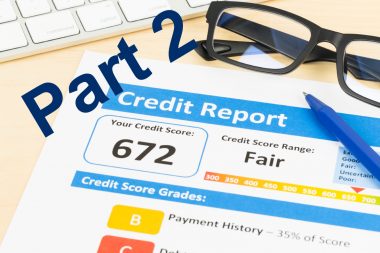The Winding Road of Credit – Part 2

September 21, 2021
Part 2 – Credit Monitoring
This month’s article is Part 2 in the series coming directly from the desk of Reliable Credit’s CFO & Compliance Officer. See Part 1 for his advice on obtaining a copy of your credit report. This Part 2 focuses on the pros and cons of credit monitoring.
What About Credit Monitoring?
As I recommended in Part 1, get a free copy of your credit report. The next step is to monitor your credit profile. I recommended that my sister download an app from one of the many credit monitoring companies out there. They are typically free and they are typically up-to-date with the most recent information available. A word of caution though – not every credit monitoring company has access to data from all three consumer reporting agencies (CRAs). Credit Karma, for example, gives access to data from Transunion and Equifax, but not Experian. And even if everything provided by Transunion and Equifax is accurate, there is no assurance that the same can be said for Experian.
Some creditors do not furnish credit information to all three CRAs, and each CRA has its own unique methods of presenting (and scoring) based on information in a credit report. The beauty of app-based monitoring is that you can at least rely on the app notifications of new or changed credit information; a potential “red flag” that gets your attention. Additionally, if something is inaccurate, apps like Credit Karma enable you to dispute the inaccuracy within the app. You must do this for each CRA reporting inaccurately and, again, not every credit monitoring app has relationships with all three CRAs. The disputed information is then forwarded to the applicable CRA for investigation.
There are many credit monitoring apps available, but this recent article from NBC News has some worthwhile suggestions.
The Downside Of Credit Monitoring Apps
The downside of these apps, in my opinion, is that you can become overly concerned with the credit score(s) presented. Following a credit score on a daily, weekly, or even monthly basis is an easy habit to fall into, but I encourage you to break such a habit for two reasons. First, credit scores can fluctuate—significantly even—based on a minor change such as an outstanding balance that increased in one month or an account that was paid off and/or closed. A credit score is dependent on the timing of a consumer’s activity (when payments are made or not made) and, importantly, the timing of when the creditor furnished the credit information (most creditors furnish credit information only monthly). A fluctuating credit score is not necessarily a cause for concern.
Second, the score you see is very likely not the score a creditor will rely on when evaluating a credit application. As of the date of this article, Credit Karma presents VantageScore 3.0 along with this background information: “VantageScore 3.0 is a credit scoring model. It takes the information in your credit report and turns it into a score. There are many scoring models out there, including ones from FICO and other companies. Each one calculates your score a bit differently, but they all use information from your report.”
Let’s Review…
The takeaway from Part 1 and Part 2 is that while credit scores come in many different varieties, the one thing all credit scores have in common is they are based only on the information contained in your credit report. Therefore, it is extremely important to monitor and ensure the accuracy of the information contained in your credit report. The score that results from the accurate information “is what it is,” as they say. The recommendation to my sister is the same recommendation for everyone:
- Get your free credit reports
- Utilize a credit monitoring company’s app and check it regularly
- Report inaccurate information as quickly as possible
- Consider freezing your credit but know the challenges that come with doing that
Companies that furnish credit information and all CRAs have processes in place to investigate and correct disputed credit information. With that being said, the time to dispute is immediately upon identifying an inaccuracy, as soon as that information hits your credit profile, and not when there is an urgent need for credit. Too often, a consumer is informed of something that is “not theirs” on a credit report only after they’ve applied for credit. Whether right or wrong, it’s much quicker for a creditor to introduce inaccurate information to a credit profile (hopefully unintentionally) than it is for the consumer to get it corrected.
As passengers on the road to good credit, it’s up to us to help keep the driver in the lane.
Contributed by: Brett B.